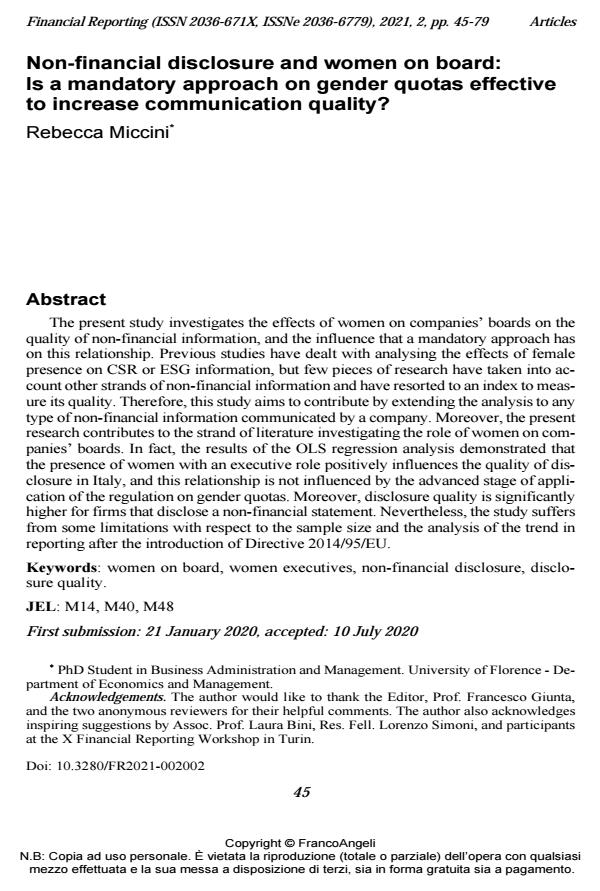Non-financial disclosure and women on board: Is a mandatory approach on gender quotas effective to increase communication quality?
Journal title FINANCIAL REPORTING
Author/s Rebecca Miccini
Publishing Year 2021 Issue 2021/2
Language English Pages 35 P. 45-79 File size 437 KB
DOI 10.3280/FR2021-002002
DOI is like a bar code for intellectual property: to have more infomation
click here
Below, you can see the article first page
If you want to buy this article in PDF format, you can do it, following the instructions to buy download credits

FrancoAngeli is member of Publishers International Linking Association, Inc (PILA), a not-for-profit association which run the CrossRef service enabling links to and from online scholarly content.
The present study investigates the effects of women on companies’ boards on the quality of non-financial information, and the influence that a mandatory ap-proach has on this relationship. Previous studies have dealt with analysing the ef-fects of female presence on CSR or ESG information, but few pieces of research have taken into account other strands of non-financial information and have re-sorted to an index to measure its quality. Therefore, this study aims to contribute by extending the analysis to any type of non-financial information communicated by a company. Moreover, the present research contributes to the strand of litera-ture investigating the role of women on companies’ boards. In fact, the results of the OLS regression analysis demonstrated that the presence of women with an ex-ecutive role positively influences the quality of disclosure in Italy, and this rela-tionship is not influenced by the advanced stage of application of the regulation on gender quotas. Moreover, disclosure quality is significantly higher for firms that disclose a non-financial statement. Nevertheless, the study suffers from some limi-tations with respect to the sample size and the analysis of the trend in reporting af-ter the introduction of Directive 2014/95/EU.
Keywords: women on board, women executives, non-financial disclosure, disclo-sure quality.
Jel codes: M14, M40, M48
Rebecca Miccini, Non-financial disclosure and women on board: Is a mandatory approach on gender quotas effective to increase communication quality? in "FINANCIAL REPORTING" 2/2021, pp 45-79, DOI: 10.3280/FR2021-002002